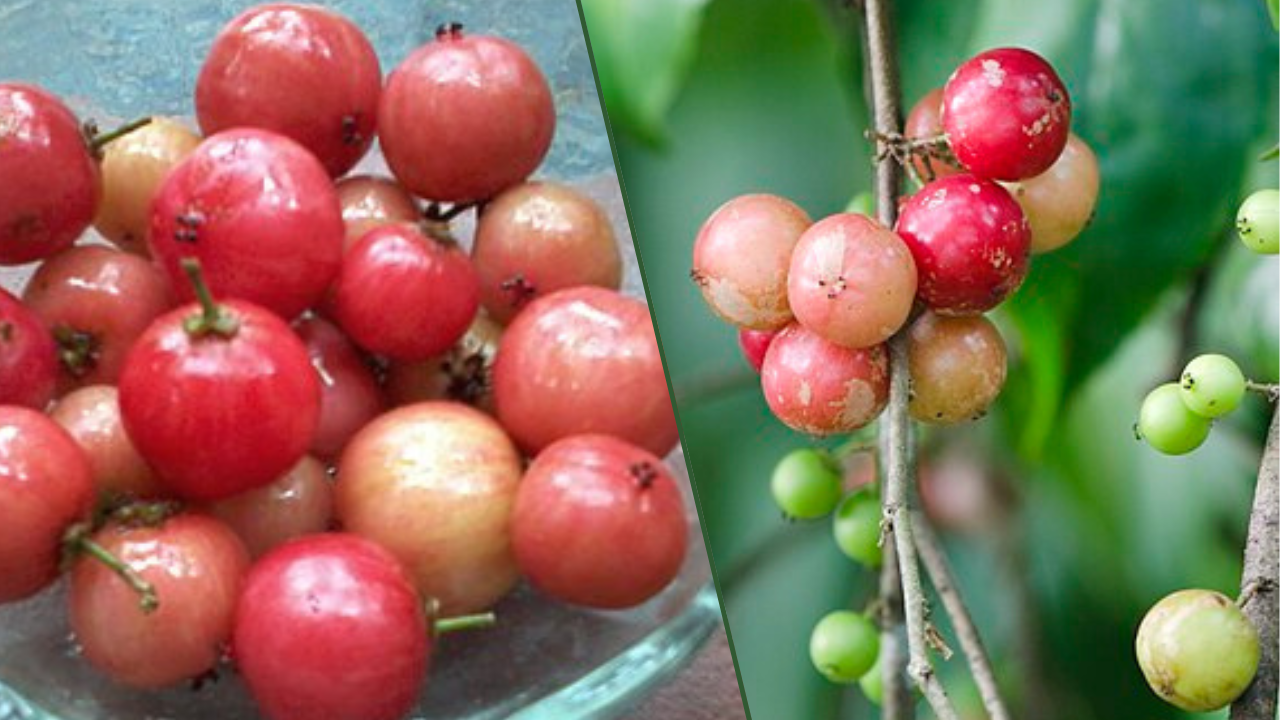
Indian coffee plum, also known as Flacourtia jangomas, is a small deciduous tree or shrub native to tropical Asia, particularly India and Sri Lanka. This species belongs to the Salicaceae family and thrives in lowland and mountainous rainforests. Widely cultivated across Southeast and East Asia, it has also naturalized in various regions due to its adaptability and the appeal of its edible fruits.
The fruit is known by various names across different regions and languages, reflecting its widespread presence and cultural significance. In Bengali, it is called Lukluk, Poniyol in Assamese, in Hindi it is called Pani Amla, Lubikka in Malayalam and Kokkuk in Tamil.
Indian Coffee Plum Tree Characteristics
The tree typically reaches heights of 6 to 10 meters. Young trees are characterized by dense, simple or branched, blunt woody thorns on their trunks and branches, which tend to diminish as the tree matures. The bark exhibits a light-brown to copper-red hue with a flaky texture. Its light green, narrow-ovate leaves contain tannins, contributing to the plant's astringent properties.
The tree produces small, fragrant white to whitish-green flowers, leading to the development of juicy, rounded fruits that transition from pink to dark red upon ripening. These fruits measure approximately 1.5 to 2.5 centimeters in diameter and encase greenish-yellow flesh. As a dioecious plant, individual trees bear either male or female flowers, necessitating both sexes for fruit production.
Habitat and Distribution
While the precise wild origin of Flacourtia jangomas remains uncertain, it is believed to have originated in tropical Asia, with India and Sri Lanka being the most probable native regions. The species is prevalent in southern and southwestern India, particularly along the Western Ghats, where it holds culinary and medicinal significance, especially in Kerala.
Beyond its native range, the Indian coffee plum has been introduced and cultivated in various parts of Southeast and East Asia. It has naturalized in regions such as Hawaii, New Caledonia, the Cook Islands, Réunion, and Australia. In Queensland, Australia, the species is regarded as an environmental weed, particularly in the wet tropics bioregion, where it invades rainforests, forest margins, and riparian areas.
Culinary Uses of Indian Coffee Plum
The fruits of the Indian coffee plum are widely consumed across South Asia, both in their raw form and as components of various culinary preparations. They are noted for their mild sour and tangy flavor, making them suitable for pickling, salt-drying, or inclusion in curries. Additionally, the fruits can be blended into juices or processed into jams and marmalades, which are particularly popular in southern India. Commercially produced jams and pickles derived from these fruits are exported globally, with Kerala being a notable center for such products.
Medicinal Applications
In South Asian traditional medicine, various parts of Flacourtia jangomas are utilized for their therapeutic properties. The fruits and leaves are employed as remedies for diarrhea, while dried leaves are believed to alleviate bronchitis. The roots have been used to suppress toothache.
The bark contains antifungal and antibacterial constituents, making it a valuable ingredient in certain Ayurvedic formulations. In tribal communities along the Western Ghats, ground bark paste is applied to treat common ailments, reflecting the plant's integral role in indigenous healthcare practices.
Cultivation and Growth Conditions
Indian coffee plum is a hardy species that thrives in tropical and subtropical climates. It can tolerate a range of light conditions, from full sun to semi-shade, and requires regular to moderate watering. The tree is adaptable to various soil types, though it prefers well-drained soils. Its resilience and relatively low maintenance needs make it a suitable choice for cultivation in diverse environments.
The Indian coffee plum, embodies a multifaceted plant valued for its edible fruits, medicinal properties, and utility as timber. Its adaptability has facilitated its cultivation and naturalization across various regions, contributing to its prominence in culinary and traditional medicinal practices, particularly in South Asia.
















